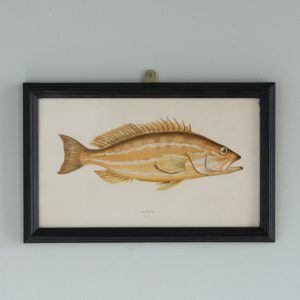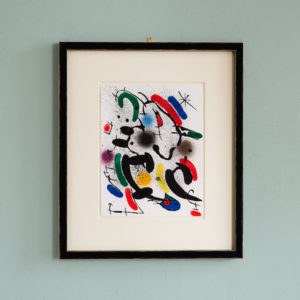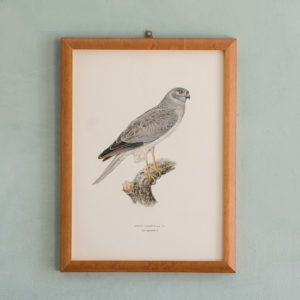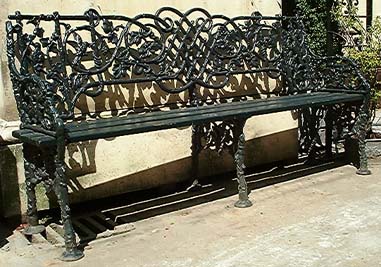Archived Stock - This item is no longer available
A cast iron three seater garden bench
the back pierced with a lattice and naturalistic foliage and birds above a wooden slatted seat and pierced supports,
SOLD OUT
In stock
This replica item is also available through a printed catalogue. The Parisien foundry "Barbezat & Cie" was established in 1855 and took on the foundry and pattern books of J.P.V.Andre who was the designer of this "Birds & Snails""banc de jardin". Andre was acknowledged as the designer in the 1858 illustrated catalogue - he had gained much prestige by winning a medal at The Great Exhibition of 1851. "Barbezat & Cie" changed its name to "Houille & Cie" in 1867 and then to "Societe Anonyme des Hautes Forneaux et Fonderies du Val d"Osne" in 1870. (See John Davis "Antique Garden Ornament", pub. Antique Collectors Club 1991, p350 for illustration of this bench in 1858 catalogue). A reproduction of the two seater is offered by LASSCO as stock number 91099. benches, seat, seats, seating, chair, chairs, garden, outdoor, dining, furniture, noteworthy maker
Recently Viewed Items
-

A History of British Fishes c1870
A History of British Fishes c1870
Wood engravings with original colour, presented in ebonised hand-waxed frame. 'Comber'. -

Joan Miró, Lithographie originale
£500Joan Miró, Lithographie originale
Joan Miró produced nearly 1,800 original lithographs and prints at the Maeght studio. He composed his score, invented his alphabet, scattered his symbols across the white page of his writing, close to graffiti. Everything was free, released, aerial, penetrated with interior light. He celebrated marriages between all techniques. Nothing was ever excessive or gratuitous. His creation cut to the essential. Miró created his own language. Dots, lines, scratches, graffiti, writing, mysterious anthropomorphic figures swimming or flying through infinite territory, fed by sparks. The power of black, awestruck colors… And the paper always defended its whiteness. Miró was about drawing above all else. His energy burst on to the sheet.£500 -

Swedish Birds (Svenska fåglar, efter naturen och på sten ritade)
Swedish Birds (Svenska fåglar, efter naturen och på sten ritade)
Magnus von Wright started out as a taxidermist in the 1820's, he stuffed birds for Societas pro Flora et Fauna Fennica, the oldest scientific society in Finland, and in 1845, became taxidermist a the university's zoological museum. Von Wright; though a skilful taxidermist, his reputation like that of his two brothers, Wilhelm and Ferdinand, rests on his skill as a zoological illustrator. The first edition of Svenska fåglar, efter naturen och på sten ritade, appeared between 1828 and 1837 and in 1859 he published the first handbook on Finnish birds. These chromolithographs are from the second edition Svenska fåglar, efter naturen och på sten ritade, published c1920 and printed by A. Bortzells, Stockholm. 'Circus Cyaneus'.

